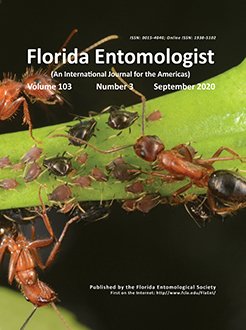The rose varieties (Rosa spp.; Rosaceae), widely used to decorate urban landscapes, are susceptible to attacks by arthropod pests. The twospotted spider mite Tetranychus urticae Koch (Acari: Tetranychidae) is one of the most economically important pests in roses. The study proposed to evaluate the resistance mechanisms (antixenosis, antibiosis, and tolerance) of 4 rose varieties (‘Ojo de Toro,' ‘Samuray,' ‘Virginia,’ and ‘Keiro') to twospotted spider mite under greenhouse conditions. The antixenosis was evaluated by non-preference of oviposition, and through the number of larvae, nymphs, and adults of twospotted spider mite; antibiosis by the growth rate (r); tolerance by chlorophyll loss and leaf damage index. Twospotted spider mite showed no preference to oviposit on plants of the Samuray variety (3 eggs per leaflet). Larvae, nymphs, and adults showed no preference to feed on Ojo de Toro and Samuray varieties. Twospotted spider mite recorded the lowest values in r (0.2047 d-1) and the percentage of chlorophyll loss (15.64%) in the Samuray variety. The damage caused by twospotted spider mite in the 4 rose varieties was similar. The Samuray variety was the most resistant to twospotted spider mite, whereas the most susceptible varieties were Keiro and Virginia.
How to translate text using browser tools
29 September 2020
Resistance of Four Rose Varieties to Tetranychus urticae (Acari: Tetranychidae) under Greenhouse Conditions
Julio C. Chacón-Hernández,
Ernesto Cerna-Chávez,
Luis A. Aguirre-Uribe,
Yisa M. Ochoa-Fuentes,
Carlos E. Ail-Catzim,
Jerónimo Landeros-Flores

Florida Entomologist
Vol. 103 • No. 3
September 2020
Vol. 103 • No. 3
September 2020
antibiosis
antixenosis
chlorophyll loss
growth rate
leaf damage index
tolerance




